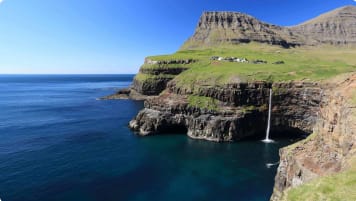Exploring Britain's Prehistoric Stone Circles
Article on Britain's neolithic past for small group educational tours for senior couples and mature solo travellers interested in learning about Standing stones, burial chambers, Skara Brae and Stonehenge or Beaker people.
8 Oct 19 · 13 mins read
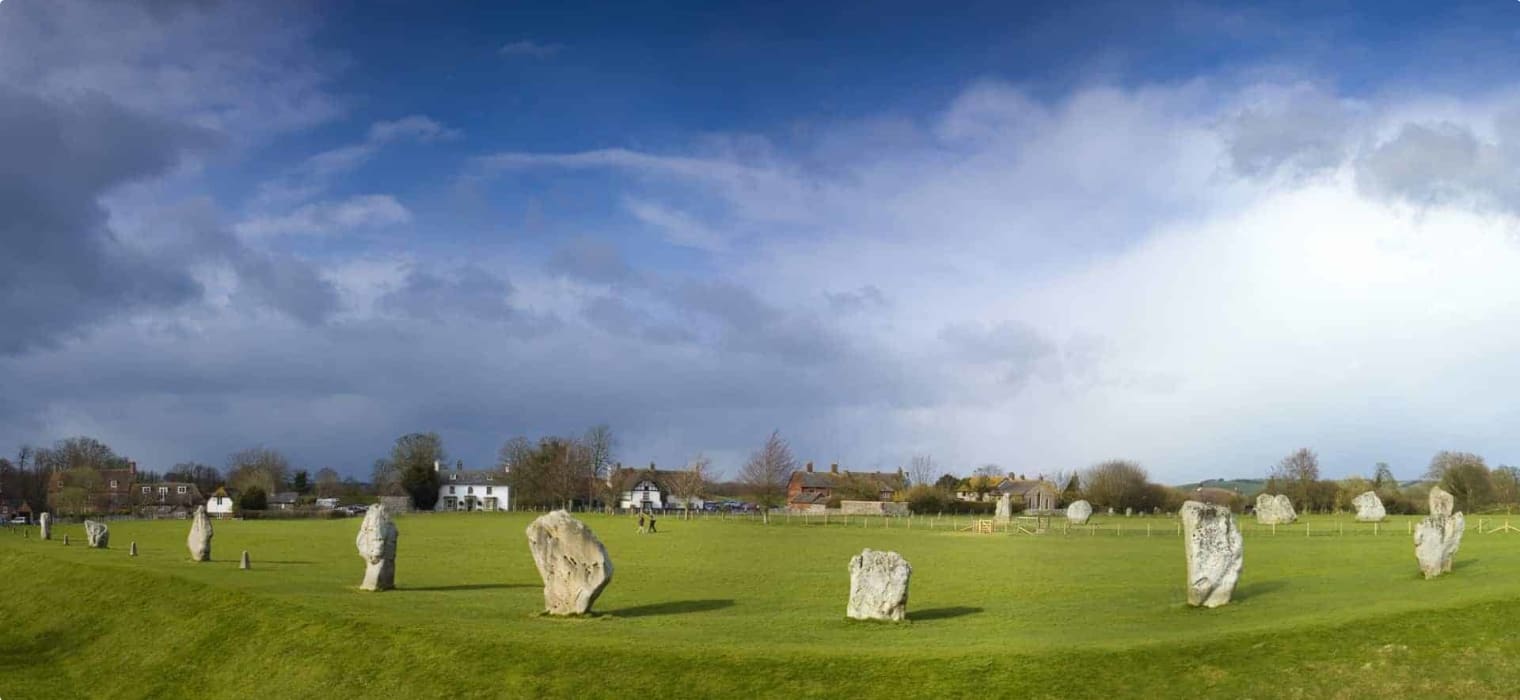
Exploring Britain’s Prehistoric Past
Scattered across the islands of Great Britain are countless stone circles and monoliths. As successive waves of different peoples settled and lived in Britain, many would erect stone monuments and carve stone engravings, in an attempt to leave behind permanent markers of their respective cultures and beliefs. The islands of Britain have therefore been marked by the physical remnants of its previous inhabitants, with the features and landmarks of the British landscape hinting at its storied past.
If you’re interested in discovering the rich archaeological history of Britain, then you’ve come to the right place. Odyssey Traveller visits a number of these prehistoric sites in England, Scotland, Wales, and Northern Ireland. In our small group tour focused on Prehistoric Britain, for example, we take a scenic drive through England and the Scottish Highlands and visit several Neolithic Sites including the Uffington White Horse and the inspiring Stonehenge. In Walking Rural Britain, we experience the beautiful white cliffs on the coast of Dover, the scenery giving us much to think about the region’s ancient history and culture. We take a walk with our local guide through country lanes, wandering through rural towns and its thatched cottages to be inspired by the local beauty and hear the legends of people who first settled in the area.
Join us as we explore the fascinating historical sites of Britain’s former inhabitants.
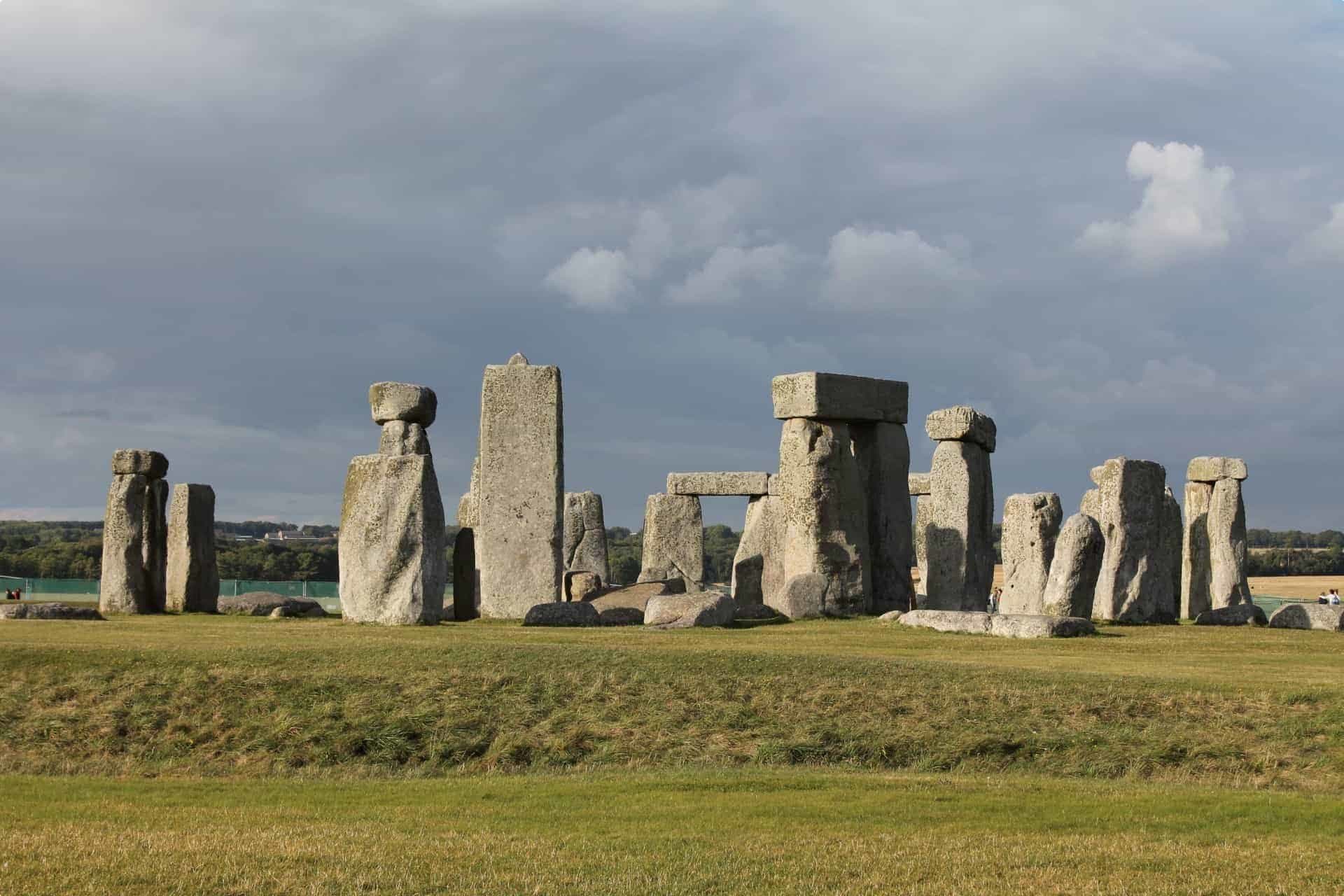
Standing stones
Throughout the Neolithic period, stone monoliths were erected during across Britain by its prehistoric inhabitants. Standing stones were mostly erected in the south-west and north of Britain where large stones could be easily sourced. Although the exact reasons for the raising of standing stones remains unknown, it is possible they were erected to honour certain religious deities, denote a space of worship, or demarcate territory.
Stone circles
From the end of the Stone Age to the dawn of the Bronze Age, Britain’s Neolithic peoples erected stone, timber and earthwork circles across the country, with more than 300 stone circles surviving to this day. Henges, which were circular earthworks that featured a ring-shaped bank and ditch, were often created as monuments in their own right, before the later additions of standing stones. Henges sometimes had pits containing an assortment of offerings, including stone tools, deer antlers, human bones or pottery fragments.
The earliest stone circles, found in Cumbria, date back to around 3000 BC, with other stone circles erected elsewhere in the country around 600 years later. Experts have speculated as to why Britain’s Neolithic peoples erected the numerous stone circles found across the British Isles, but there are no conclusive answers.
It has been noted that many stone monuments have an alignment with astronomical events; as such, much like Britain’s Neolithic burial chambers, it is possible that many stone circles were erected for the specific purpose of observing astronomical events and understanding the heavens and the universe.
Other archaeologists such as Aubrey Burl, the author of Prehistoric Stone Circles, have suggested that the circles were built during a period of catastrophic weather. The cause of this change in weather patterns remains unknown, but many scientists believe that that the catastrophe was the result of a volcanic eruption. The effects were felt all over Northern Europe for decades. Burl writes that:
‘Helpless in a seemingly never-ending calamity, they turned away from the ancestors they believed had once protected them and, instead, looked to the threatening skies. […] Open-air rings were put up, of earth in the east of Britain, where there was no stone, of posts in woodland areas, of stone in the west, where thousands of boulders lay exposed on the hills.’ (Burl, Prehistoric Stone Circles, 10).
Stone circles were built over a period of more than 2,000 years, ranging from the Late Neolithic to the Middle Bronze Age. Their use and structure evolved considerably over the years, as we will see below.
Early Stone Circles: The Late Neolithic Age c. 3650-2900 BC
Pre-historians believe that the very earliest stone circles in the British Isle were built in the north-west of Ireland. The Carrowmore cemetery in County Sligo contain ‘boulder-circles’, open rings of high boulders which contain burial cairns (or stone mounds) – a transitional form from passage-tombs to the true stone circle.
Some of the best examples of early British stone circles can be found in Britain’s Lake District, including Castlerigg, which is visited on our Prehistoric Britain tour. Prehistorians believe that – based on their mountainous situation – that the rings in the Lake District were created by peoples who engaged in the prospecting and manufacture of valuable stone axes during the middle and late Neolithic periods. These circles have closely set stones, similar to the continuous banks of older henges. Castlerigg, like other Lake District circles, has an obvious entrance, defined by two pairs of stones or taller pillars.
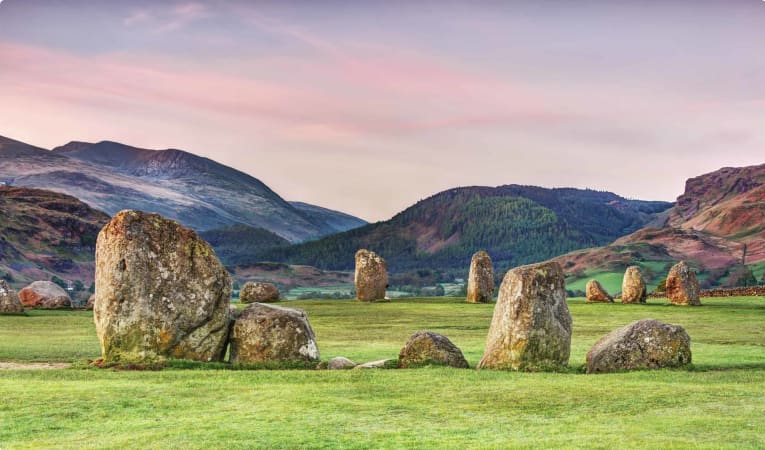
Castlerigg was built of local stone dragged to the site by men and women, possibly using oxen or castrated bulls. Charcoal was discovered onsite, indicating that it was used for ceremonial purposes. Little more can be known about these stone circles since only a small number of objects have since been recovered.
The Lake District is also home to Long Meg, a set of 59 stones also built in the Late Neolithic, and one of the largest stone circles in England. Particularly interesting is a decorated stone standing outside the main circle. Prehistorians suggest that this was erected in line with a celestial event – such as the midsummer sunrise or midwinter sunset. Wordsworth famously entreated the circle to ‘Speak Giant Mother!’, but she has refused to give her secrets away to the poet or any subsequent historians. Little is known of her purpose.
Our tour also visits the Rollright Stones in Oxfordshire. These closely resemble the architecture of Swinside, near Castlerigg in the Lake District, indicating that this may have been a staging post for the movement of axes from Cumbria to southern England.
The Middle Period: Late Neolithic to early Bronze Age, c. 2900-2200 BC.
During this period, the ‘Beaker people’, named after their distinctive and elegant pots (often buried with the dead under round barrows), arrived in Britain and Ireland and mixed with the native people. They are believed by many to have been the first people to use metallurgy in Britain. This period saw the building of many of the most perfect stone circles, while the practice of building circles spread until it was seen in virtually every part of the British Isles.

Some of the rings built in this period, such as Avebury, in Wiltshire, southern England, were enormous – with more than a hundred massive stones, more than 400 metres across. The Ring of Brodgar in Orkney, 104 metres in diameter, is another example of a vast stone circle. The majority of circles were much smaller, however, between 20 and 30 metres in size.
Unlike their predecessors, the stone circles built during this period were explicitly decorative. Their designers tried to create elegant shapes, including ovals, perhaps created by the use of a loop of rope held tightly against three pegs set in the ground. Each region tended to have a preferred number of stones – twelve in the Lake District, or ten in the north-east of Scotland, suggesting elementary numeracy and simple counting systems among these early societies.
The standing stones of Callanish on the island of Lewis and Harris in the Outer Hebrides are indicative of the evolution of stone circles over thousands of years. The monument began as a simple five metre high stone near the coast, erected as a landmark for seamen. Decades or centuries later an oval of around 13 by 12 metres was built around it, dated by radiocarbon at between 2800 and 2700 BC.

Four centuries later, a long avenue was laid out from the north north-east, aligned to the most southerly setting of the moon. More rows were added, aligned to astronomical phenomena – one to the south (aligned to the meridian), one to the west (aligned to the equinoctial sunset), and one to the east north-east (aligned to the galactic cluster of the Pleiades). Finally, a chambered tomb was crammed in the ring.
In 300 BC, the Greek explorer Pytheas visited Callanish, which he described as a ‘spherical temple’ and learned that the moon visited every nineteen years. Folk memory holds that Pytheas visited Stonehenge, but its latitude is too far south for the moon to have behaved as he described. Though Pytheas had a good grasp of astrology, the astrological messages of the circles were only grasped in modern times.
Late Stone Circles: early to middle Bronze Age, c. 2200 – 1500 BC.
It was during this period that the majority of Britain’s stone circles were erected. By this point, most sites are ovals – though because many are very small, it is often hard to tell if a monument was a good oval or a poor attempt at a circle.
During this era, most sites were no longer megalithic. Remnants from this period are close together and stones are relatively small, indicating that most were raised by individual families. In this period, stone circles were closely linked to burial cairns. Though larger than the average Derbyshire stone circle, the Nine Ladies near Stanton Moor is a good example of a later period stone circle visited on our tour.

It is unlikely that any stone circle was built after 1500 BC. Deterioration in the climate meant that uplands were abandoned, while changes in religious belief saw new ceremonies and forms of worship emerge.
Stonehenge
Despite our increased knowledge of stone circles, Stonehenge remains an enigma. It was built in an unlikely place, on a plain with few boulders, only forests and timber. Burl suggests that at first, Stonehenge was not a typical stone circle, but a representation of an earlier timber building, likely a mortuary house where the dead were laid until their bones dried.

A century or two later, burials were added. Twenty-five cremations have been recovered from the Aubrey Holes, a ring of chalk-cut pits winding along the inner edge of the bank, while thirty other cremations have been found in the ditch.
Around 2700 BC, bluestones from south-west Wales were put up in two concentric settings in the shape of horseshoes. How the stones reached Wiltshire is a matter of debate between prehistorians. Some argue that they moved by human transportation, while others argue that glaciation in the region led to the emergence of bluestone.
At this point, there was a change in ritual and the north-eastern entrance was widened so that it would frame the midsummer sun. This suggests a change from a lunar to a solar cult. Inside the bank sits a rectangle, built in that shape so that its east south-east/west north-west diagonal indicated the May Day sunset.
Around 2500 BC, the bluestones were uprooted and heavy blocks of sarsen were brought from the Marlborough Downs to the north. Five towering archways, known as trilithons, were set up inside the circle of sarsens, arranged in a horse-shoe shape to the north-east. The bluestones were returned to form a rough circle inside the sarsen circle, and a long altar stone was laid at the heart of the monument.
However, the builders of the new monument were not experienced with sarsen stones. Many stones had foundations that were dangerously insecure, some were not long enough, and some were cracked. The result was the ‘impressive but ramshackle edifice’ that we see today (Burl, Prehistoric Stone Circles, 47).
Indications are that Stonehenge was influenced by similar monuments in Brittany. The horseshoe shapes, along with carvings of Bronze Age weaponry and figurines of the protectress of the dead on the stones, were all unknown in the megalithic monuments of the British Isles – but common in Brittany.
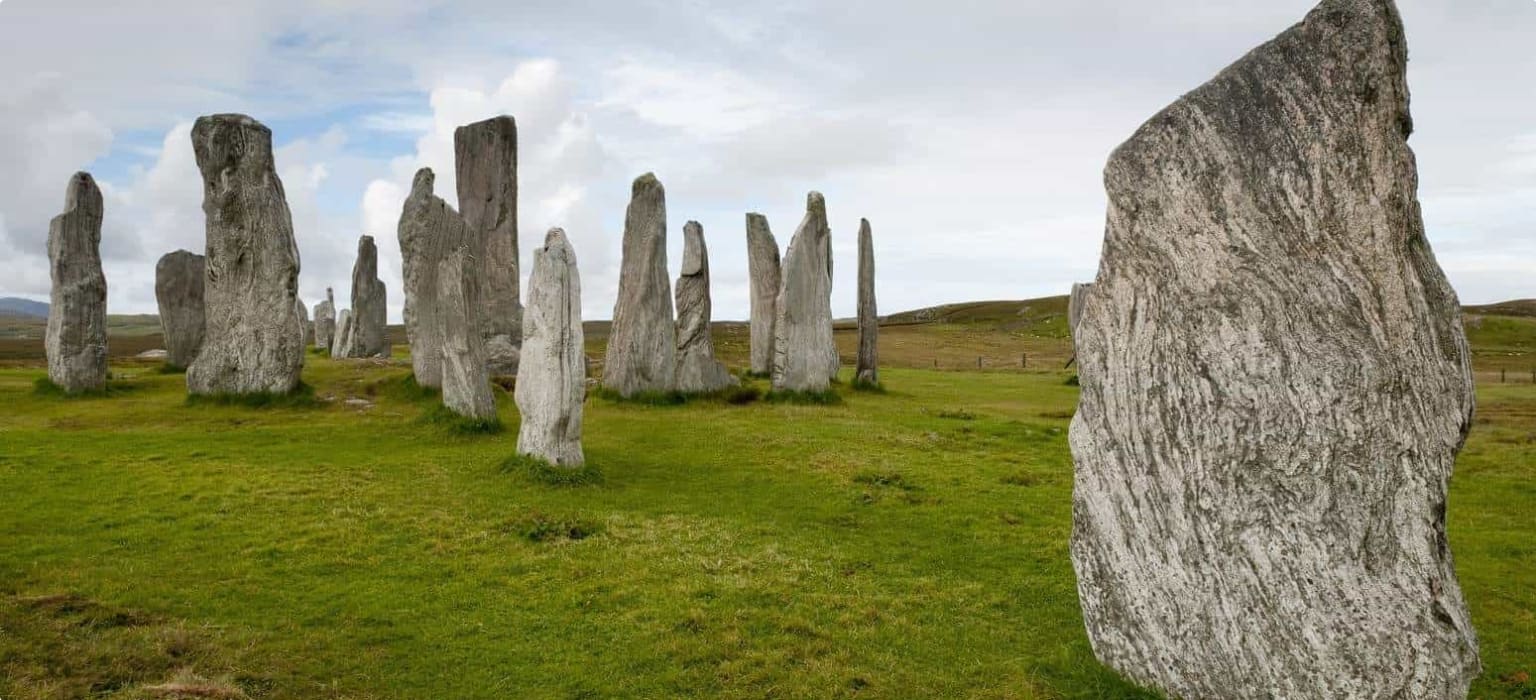
Other prehistoric remnants
Stone rows
Sometimes rather than being arranged in a circle, stones were raised and positioned together in a line. This arrangement was particularly popular in northern Scotland. There were a variety of possible uses for this particular arrangement; stone lines could have been used to mark out a particular route, or to demarcate the boundaries of an area of sacred worship. Many stone rows have a burial cairn at one end, or are located close to monoliths or stone circles.
One of the most notable sites of stone rows and monuments is the Calanais site on the Isle of Lewis in the Outer Hebrides. Constructed 5,000 years ago, the Calanais site consists of a cross-shaped pattern of standing stones, the largest of which is a towering 4.8 metre monolith at the centre of the site.
Stone Tools
Stone tools occupied a central role in Neolithic societies, with stone implements utilised for hunting, sewing, woodwork, and creating art work. Flint, a type of quartz, was used for the majority of Stone Age tools, with most flint tools dating from 10,000 BC onwards. Even with the development of metal tools in the Bronze and Iron Ages, flint tools were still used for some jobs due to the quality and sharpness of flint and obsidian blades. Stone tools can be commonly found in the south-east of England, and can also be found in Devon, Cornwall, and in north-west England, with flint tools including bladed instruments, scrapers, arrowheads and axes.
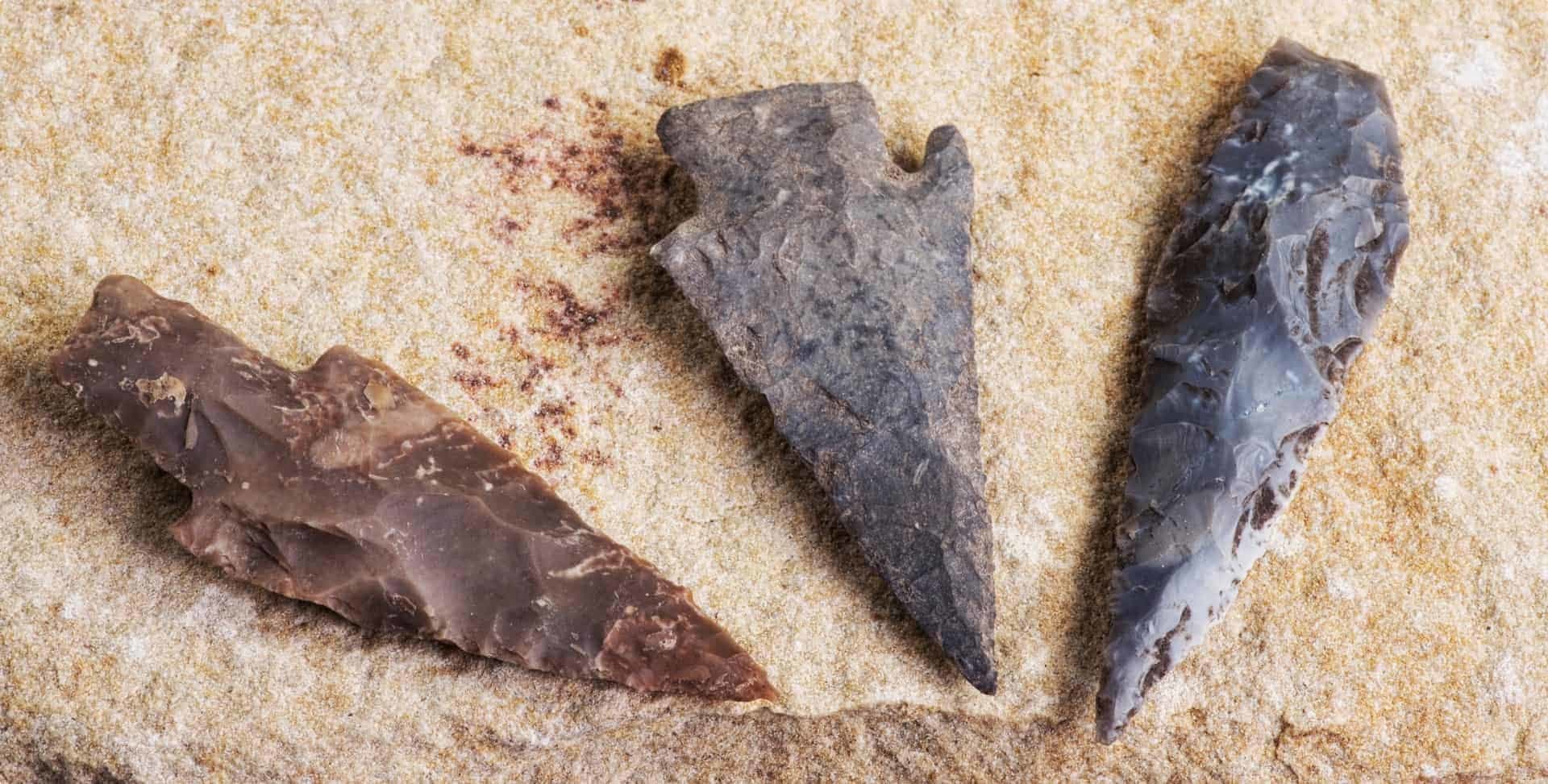
Rock Art
Stone engravings began to appear in Britain from around 4,000 BC, with the practice of engraving rock art carrying over from the Neolithic period to the Middle Bronze Age. There were three techniques to carve engravings into rock faces: scratching, to outline a design; pecking, using a pointed stone to carve out a desired shape; and grinding, which smoothed and deepened the shape.
Much like the mysterious stone circles and monuments erected in Britain during the Neolithic period, the purpose of much of Britain’s rock art is unclear, with the enigmatic patterns and markings of rock engravings giving little away about the original intent behind their creation. It is possible that they were symbolic depictions of landscapes, tales or cultural themes, or perhaps they were boundary or route markers for the local area.
Burial Grounds: Clava Cairns, Scotland
Standing stones and other stone monuments are often believed to mark burial grounds from the Neolithic Era. A notable example is Clava Cairns, near Inverness in Scotland. Set within the wooded Balnuaran of Clava, the oldest parts of the monument were built over 4,000 years ago. The monument consists of three ‘chambered cairns’, burial chambers consisting of a sizable stone chamber, over which cairns, or piles of stones, are laid. The two outer cairns are passage graves, with an entrance into the central burial chamber, while the inner cairn has no entrance.
While we don’t know who was buried here, historians speculate that they were likely significant people, such as important leaders.
The Clava Cairns are a tapestry of neolithic history. Around 1000BC, another group found the monuments and built on them, including a chain of standing stones.
Stone Settlements
During the Neolithic and Bronze Ages, stone settlements were constructed across the British Isles for added protection and permanence. The remnants of Iron Age fortified homesteads called brochs can be found across the north and west coasts of Scotland. Brochs were circular towers featuring large walls that housed interior chambers and rooms, and were often high-status buildings occupied by the village chief or someone of local importance. In times of danger, the broch of a settlement would have acted as a refuge for locals seeking safety against raiding parties.
Duns, another type of fortified settlement, were built across western Scotland and Ireland during the Bronze Age period. A dun would consist of a large circular dry-stone wall that would encircle and shelter wooden buildings within the wall’s interior.
Perhaps the most famous stone-built Neolithic settlement in Britain is the UNESCO Heritage Site Skara Brae, located in the Orkney Islands off the cost of Northern Scotland. Occupied between 3,180 BC to around 2,500 BC, Skara Brae predates both Stonehenge and the Great Pyramid, and is one of the best-preserved Neolithic settlements in Europe. The settlement of Skara Brae consists of several houses, a large chambered tomb, and two stone circles, and also contains stone built-furniture and a range of domestic artefacts, including gaming dice, tools and jewellery.
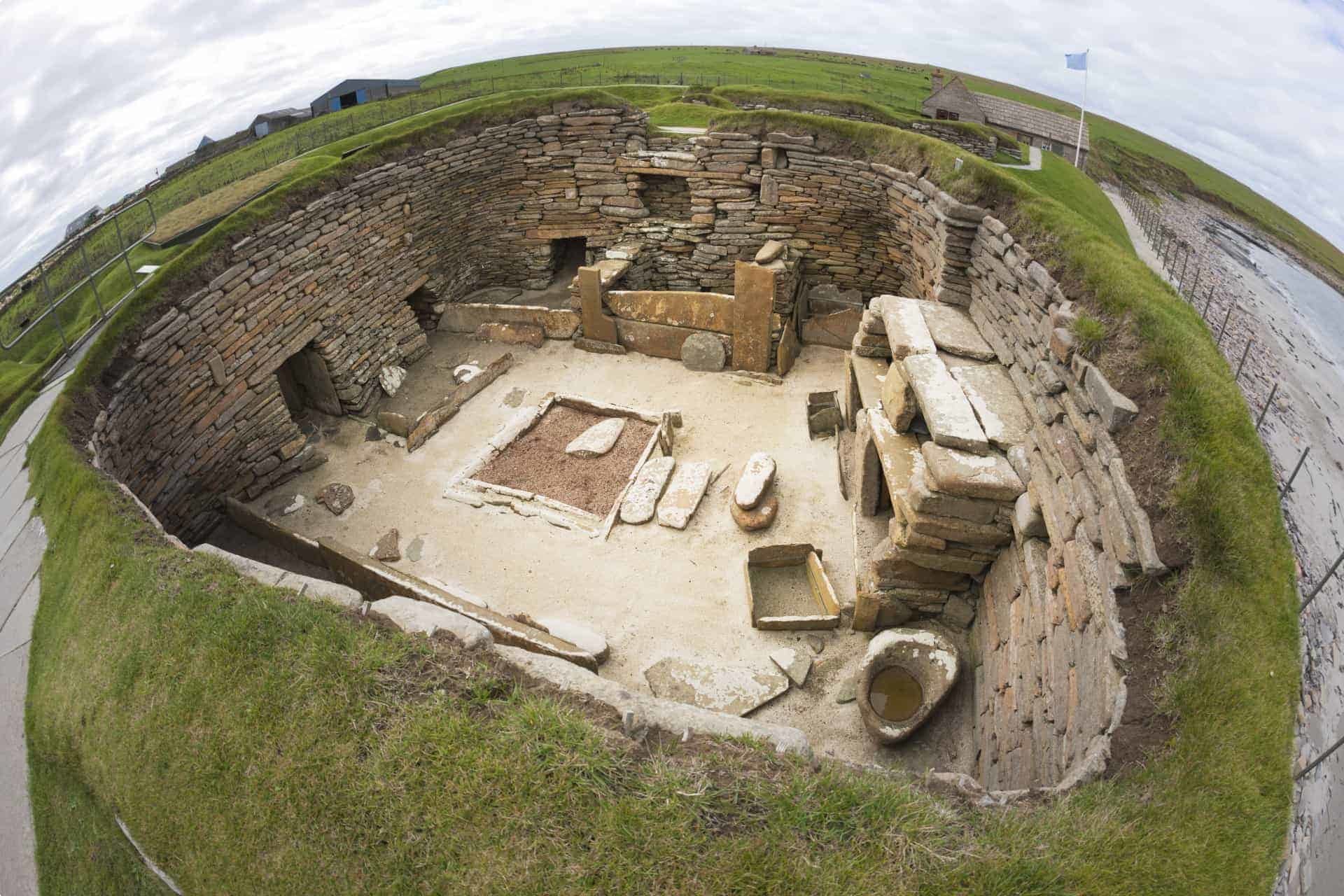
Later stone remnants:
Stone Writing
In numerous rockfaces across the British Isles, the languages of Britain’s ancient peoples can be found recorded in stone. Ogham is an alphabet native to southern Ireland, with most ogham-inscribed stones found in southern Ireland, though others have been found in Wales, Cornwall, the Isle of Man and western Scotland. The names and recurrent words found on ogham-inscribed stones give an impression of a militaristic society, with two of the most common words being ‘wolf’ and ‘battle’.
Runic alphabets were brought into southern England by Saxon settlers in the fifth century AD, with the alphabet used in England known as futhorc. Runes were in usage in England until the tenth century, when the Old English Latin alphabet began to supplant it.
Viking graffiti on the Orkney Islands
Perhaps the most famous runic inscriptions in the British Isles are the Viking graffiti found in Maes Howe burial chamber in Orkney. Carved in the 12th century by a group of warriors seeking shelter in the tomb, the carvings are humorous and boastful, including statements such as “These runes were carved by the man most skilled in runes in the western ocean”.
Symbol Stones
In northern Britain, symbol stones were carved and fashioned by the Picts, an Iron Age tribal group. The earliest stones were unshaped boulders or slabs that were decorated with deeply inscribed lines depicting abstract symbols and animals, and date back to the 5th to the 7th centuries AD. Broadly speaking, Pictish symbols fell into three categories – animals, whether real or mythical, mundane pairs, with everyday objects depicted in pairs, and abstract, which were often geometric and stylised patterns or shapes.
Following the arrival of Christianity in the late 6th century, the Picts combined existing patterns and symbols with Christian motifs and themes, with symbol stones coming to represent the vibrant cultural fusion that typified Pictish society at the time. The four Aberlemno symbol stones near Forfar in Angus are outstanding examples of Pictish art, covered in images of serpents, battle scenes, angels and intricate patterns.
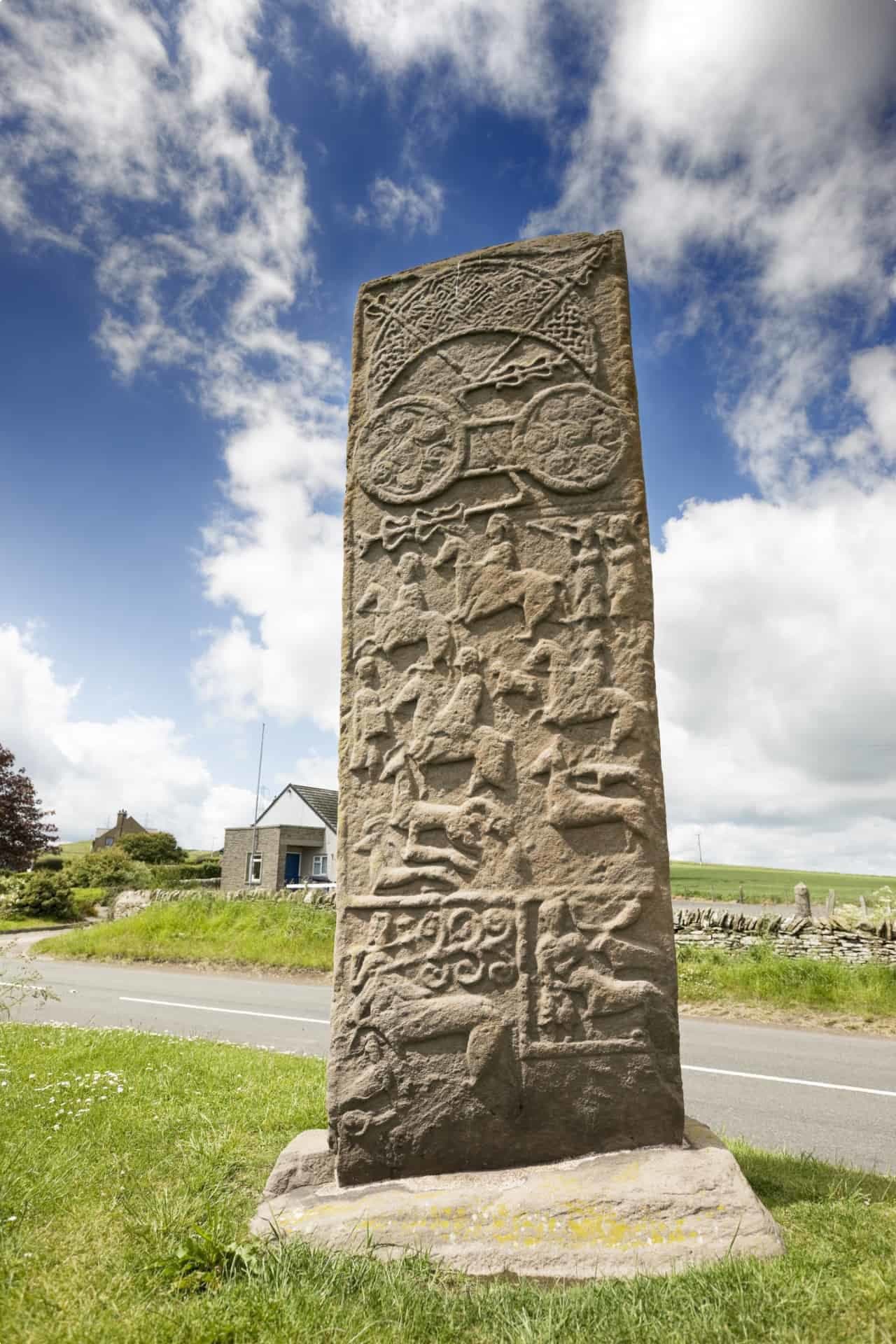
Stone Crosses
With the arrival of Christianity to the shores of Britain and Ireland in the 7th century AD, stone crosses began to be erected across the British Isles. The earliest crosses date from the late 8th century, with preaching crosses originally erected to mark the location of open-air religious services held by travelling priests. Early high crosses were often carved with intricate ‘interlace’ patterns, as well as plant motifs and human figures.
Aside from being objects of worship and religious devotion, crosses were also erected to serve a communal or even navigational purpose. Market crosses were erected in the centre of market settlements to denote market places and gathering sites. Wayside crosses were erected by the sides of roads, and acted as shrines, route markers and boundary markers, as well as sometimes acting as markers for the boundaries of monastic estates.
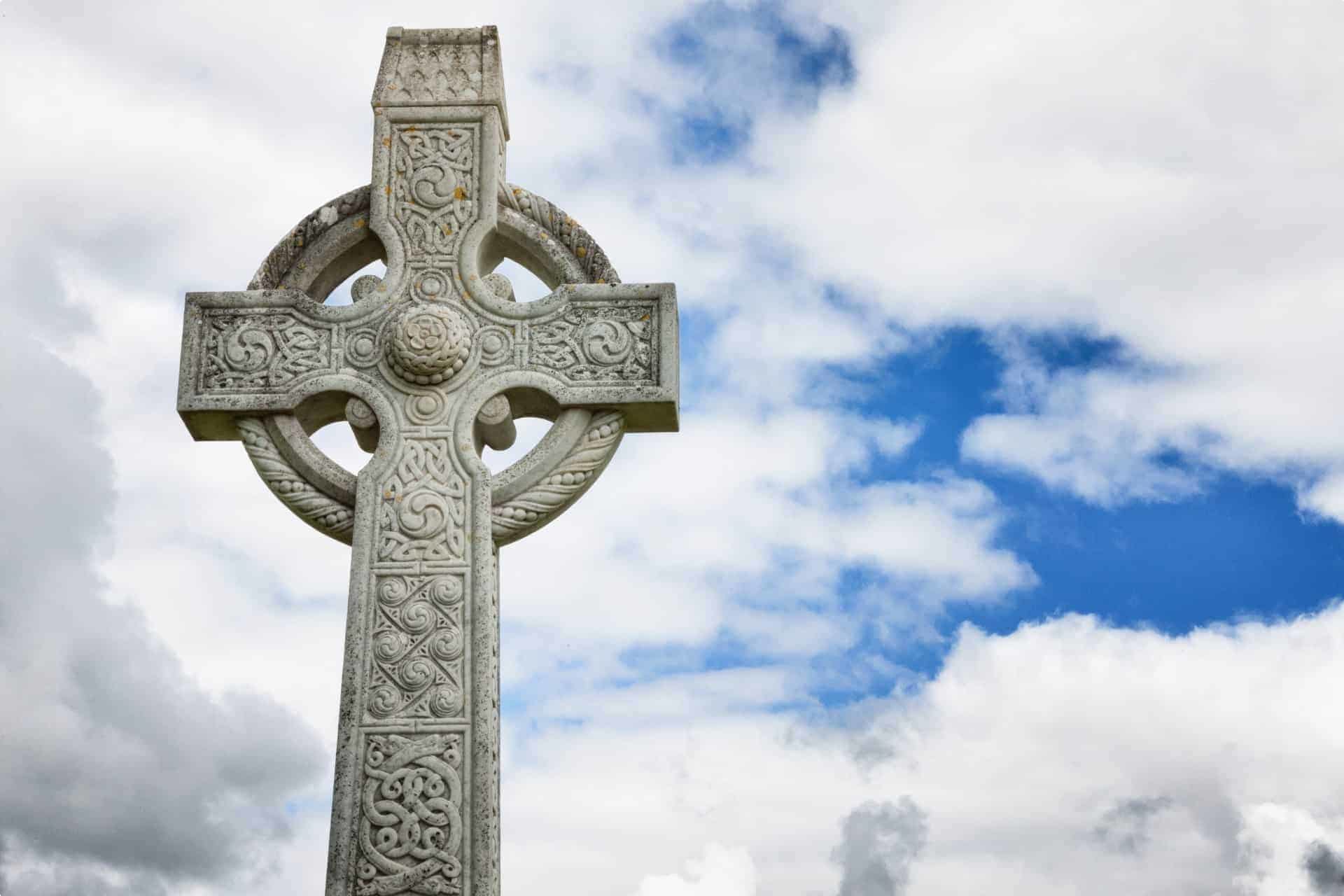
As society and culture changed in Britain over the centuries, the stone monoliths and engravings that were once so ubiquitous began to disappear from the landscape. However, the legacy of Britain’s former inhabitants remains to us through the monuments and carvings they left behind.
Small group tours Britain
If you want to see more of the British Isles, why not check out our Prehistoric Britain History Tour, which visits the sites of many of Britain’s most iconic standing stones. You could also check out the Walking Rural Britain Tour or the Scottish small groups tour to truly take in the sights of British countryside. For more on our varied tours of Britain, click here.
Originally published January 14, 2019.
Updated with new information on November 1, 2019. Refreshed September 24th 2021.
Related Tours
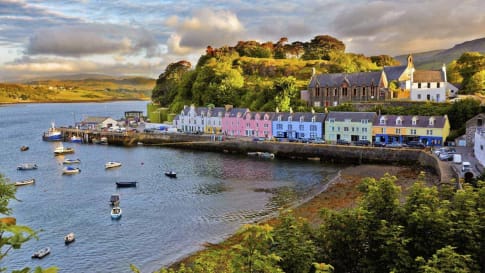
20 days
Jul, Sep, May, AugScottish Islands and Shetland small group tours for seniors
Visiting Scotland
An escorted small group tour for couples and solo travellers of the Scottish isles including the isle of Skye draws on local guides to share their knowledge of the destinations in this unique part of Scotland. UNESCO world heritage site are visited as breathtaking scenery and authentic experiences are shared in a group of like minded people on this guided tour of remote Scotland.
From A$16,695 AUD
View Tour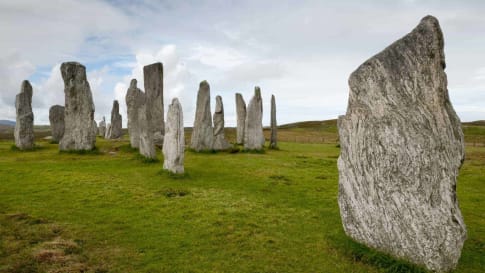
21 days
AugPrehistoric Britain small group history tour including standing stones
Visiting England, Scotland
This guided tour invites you to explore UNESCO World heritage sites at Skara Brae in the Orkneys, Isle of Skye, and Stonehenge in a prehistoric tour. This escorted tour has trips to key sites in Scotland, and the Irish sea in Wales such as Gower Peninsula and National Museum in Cardiff and England. Each day tour is supported by local guides.
From A$16,750 AUD
View Tour22 days
AugRoman Britain
Visiting England
On this small group tour explore with a tour director and local guides the world of Roman Britain. The Romans occupied Britain for some 400 years and left behind a lasting legacy from roads Hadrian's wall to Roman Baths many are UNSECO World heritage listed.
From A$13,855 AUD
View Tour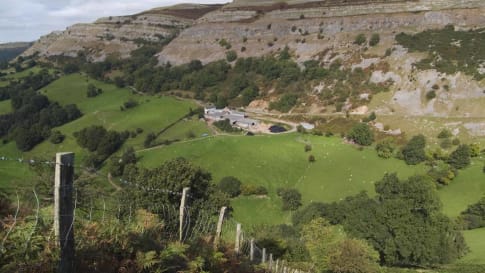
20 days
May, Sep, JunWalking Ancient Britain
Visiting England
A walking tour of England & the border of Wales. Explore on foot UNESCO World Heritage sites, Neolithic, Bronze age and Roman landscapes and the occasional Norman castle on your journey. Your tour director and tour guide walk you through the Brecon beacons, the Cotswolds and Welsh borders on this small group tour.
From A$13,995 AUD
View Tour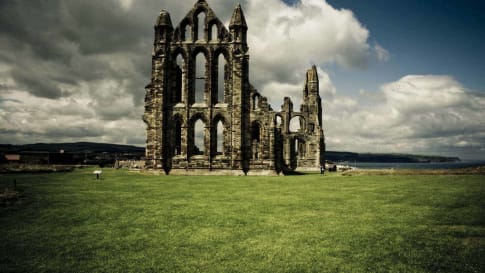
22 days
Sep, JunRural Britain | Walking Small Group Tour
Visiting England, Scotland
A walking tour into England, Scotland and Wales provides small group journeys with breathtaking scenery to destinations such as Snowdonia national park , the UNESCO world heritage site Hadrians wall and the lake district. each day tour provides authentic experiences often off the beaten path from our local guides.
From A$15,880 AUD
View Tour
22 days
Apr, AugSeven Ages of Britain, snapshots of Britain through the ages.
Visiting England, Scotland
This guided small group tour starts in Scotland and finishes in England. On Orkney we have a day tour to the UNESCO World heritage site, Skara Brae, before travelling to city of York. Your tour leader continues to share the history from the Neolithic to the Victorian era. The tour concludes in the capital city, London.
From A$15,995 AUD
View Tour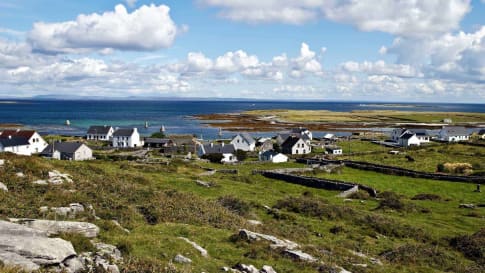
18 days
Aug, Apr, SepSmall Group tours exploring the Treasures of Ireland
Visiting Ireland
An escorted small group tour to Northern Ireland & Ireland, with local guides and itineraries that give authentic experiences Ireland's capital, Dublin, including 1/2 day tour of St Patricks cathedral and Trinity college. Destinations also Aran islands , Kerry plus the world heritage site, the giant's causeway. Ireland tours for singles over 50 and couples.
From A$12,615 AUD
View Tour
22 days
Apr, SepSmall group tours Medieval England
Visiting England
A small group tour of England focused on Medieval England and Wales. Spend 21 days on this escorted tour with tour director and local guides travelling from Canterbury to Cambridge, passing through Winchester, Salisbury, Bristol, Hereford and Norwich along the way. Castles, villages, Cathedrals and churches all feature in the Medieval landscapes visited.
From A$14,665 AUD
View TourRelated Articles
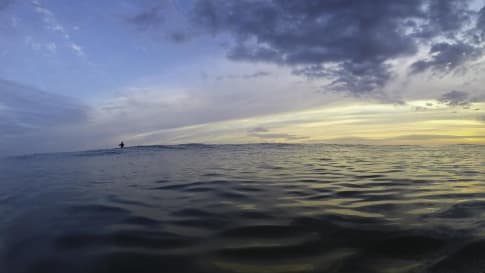
Atlantic Ocean and How it Shaped Ancient Communities In Europe
Article of interest for senior couples and mature solo travellers joining a small group European tour to Faroe Islands, Scottish Isles, Morocco or Portugal. Focus is on the early exploration of the Atlantic.

British Village Icons: Definitive Guide for Travellers
Icons of the British Villages: Pubs and Cottages The British pub and cottage figure prominently in the image of a (often romanticised) quintessential “British village”. In this article, we will give special attention to these…

Highlights of Stonehenge and Avebury
Explore Neolithic Britain including Stonehenge, the stone circles of Scotland for example and Skara Brae. Material to support escorted small group tours for senior couples and mature solo travellers to Britain and Europe.
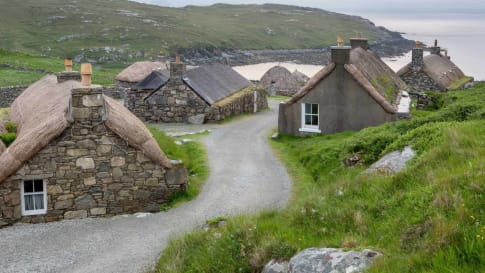
Islands of the Outer Hebrides: The Definitive Guide for Travellers
Scotland's Outer Hebrides are discussed in this article to assist the mature solo and couple in planning to visit Scotland and the British isles on a small group tour.
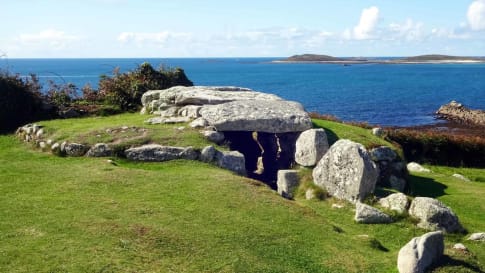
Neolithic Burial Chambers: Telescopes to the Stars
Neolithic Burial Chambers and the stars The calendar you have in your smartphone was once written in the stars. During the Neolithic or final period of the Stone Age, skies were used to mark time;…

New Discoveries about Britain's Stone Circles
Article about recent discoveries on stone circles in Neolithic Britain. Explore and learn on an educational small group tour for senior couples and mature single travellers to Scotland, Wales and England plus so much more including Australia.
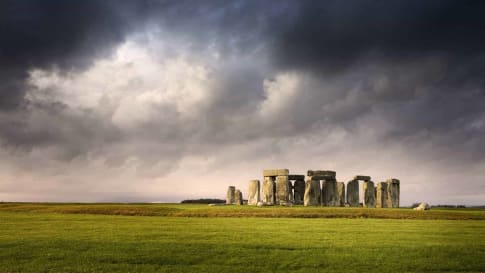
Bronze Age Beaker People of Stonehenge
Learn about the Beaker people and Stonehenge before a small group educational tour for senior couples and mature solo travellers. Explore prehistoric, neolithic Britain including Avebury and Orkney's Skara Brae.
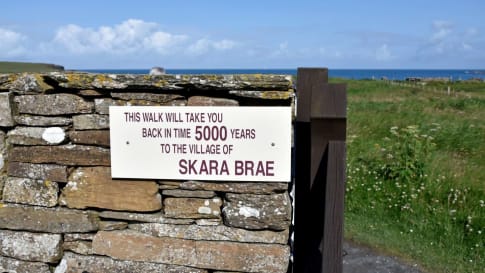
Skara Brae, Scotland
Article introducing Neolithic Britain and the trading routes to Iceland, the Faroe Islands and the Irish sea. Skara brae is included on the Scottish isles tour and the Prehistoric Britain program. Small group tours for senior couples and mature solo travelers.
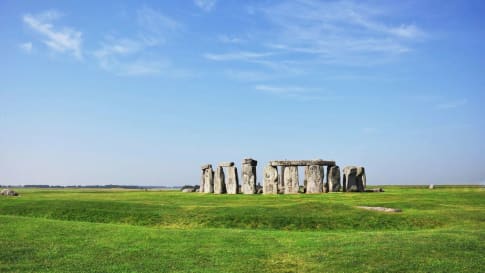
Standing Stones in Prehistoric Britain
Standing Stones in Prehistoric Britain Stonehenge, England, United Kingdom The standing stones of Great Britain continue to be the subject of research and archaeological hypothesis. Britain is not the only location where standing stones are…



